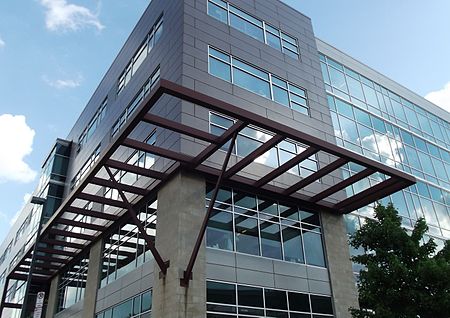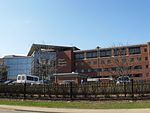McGowan Institute for Regenerative Medicine
1992 establishments in PennsylvaniaAC with 0 elementsMedical research institutes in PennsylvaniaUniversity of Pittsburgh

McGowan Institute for Regenerative Medicine is a medical research institute which is a partnership between the University of Pittsburgh and the University of Pittsburgh Medical Center and is located in Pittsburgh, Pennsylvania, United States.
Excerpt from the Wikipedia article McGowan Institute for Regenerative Medicine (License: CC BY-SA 3.0, Authors, Images).McGowan Institute for Regenerative Medicine
Technology Drive, Pittsburgh
Geographical coordinates (GPS) Address Nearby Places Show on map
Geographical coordinates (GPS)
| Latitude | Longitude |
|---|---|
| N 40.43162 ° | E -79.96237 ° |
Address
Technology Drive
Technology Drive
15261 Pittsburgh
Pennsylvania, United States
Open on Google Maps









